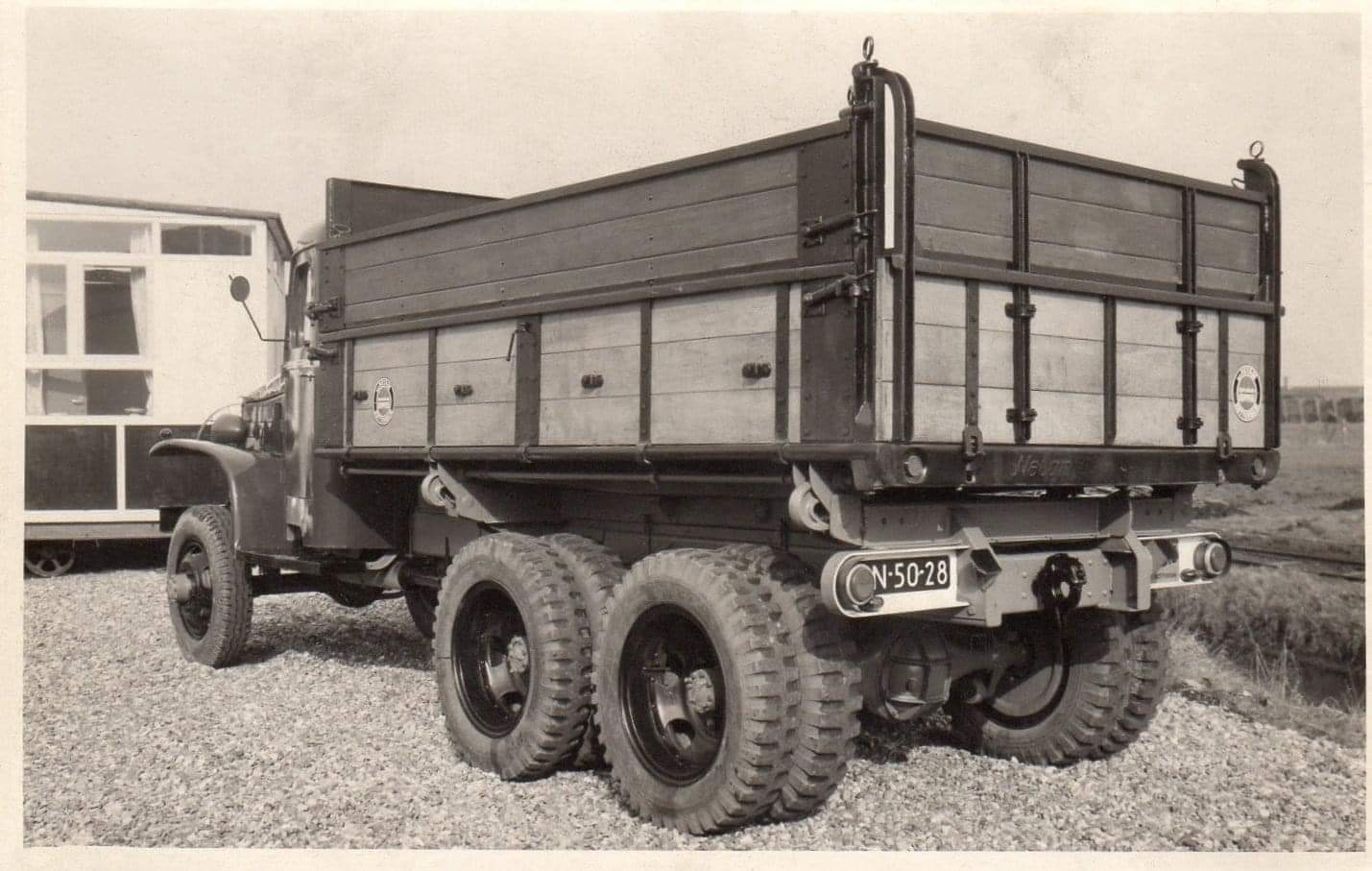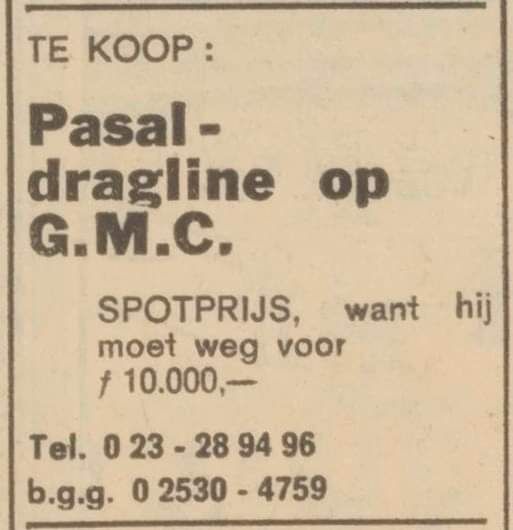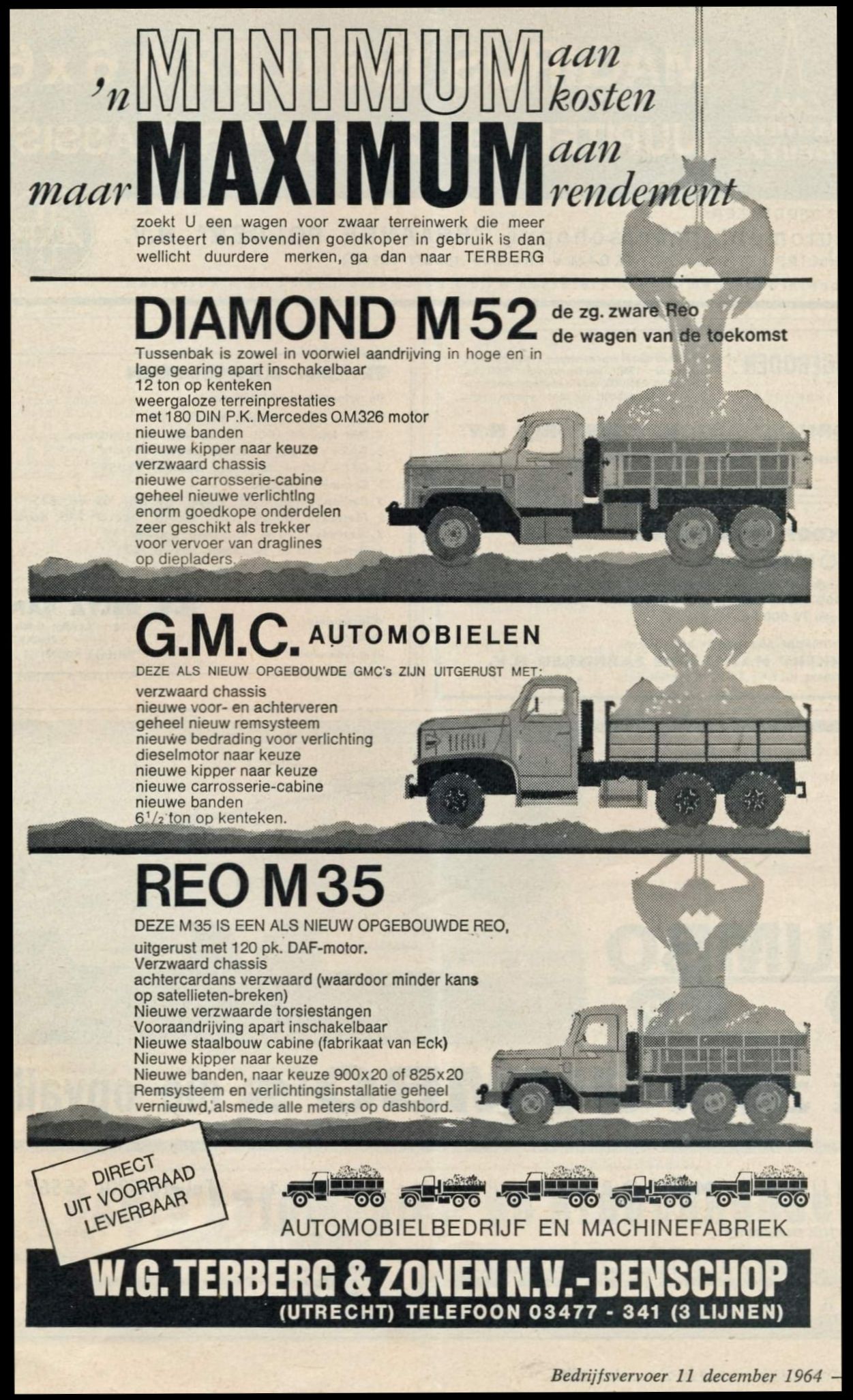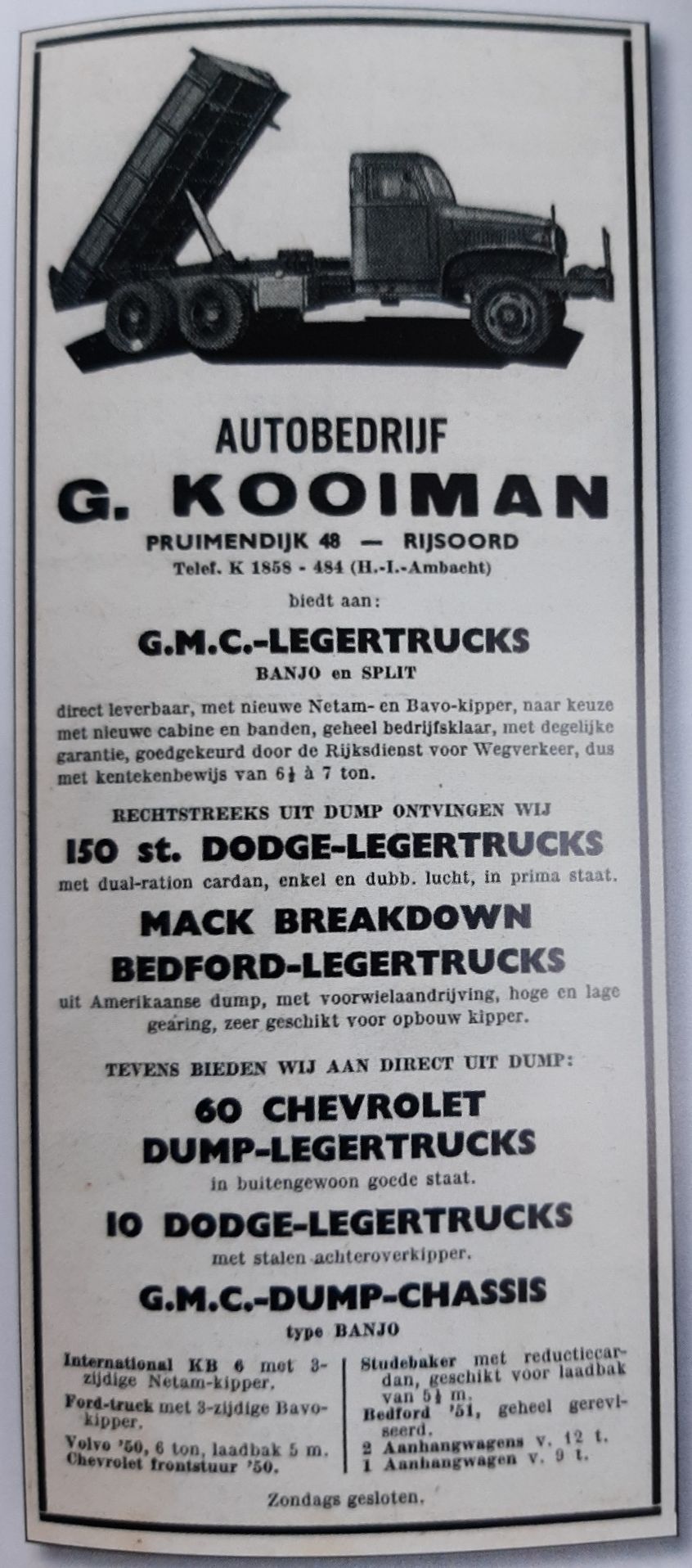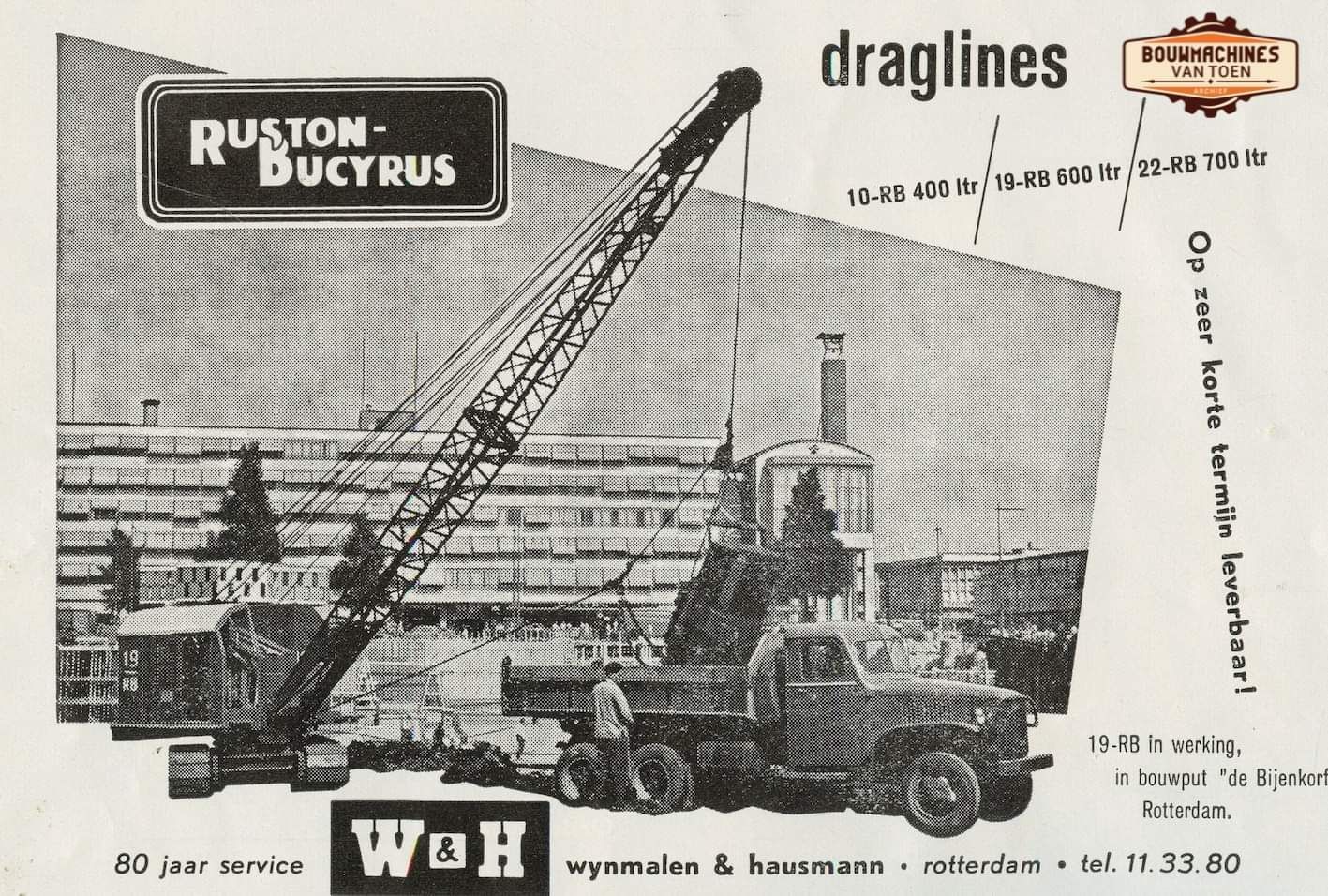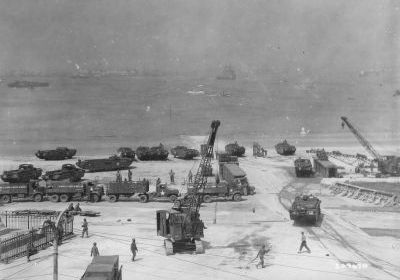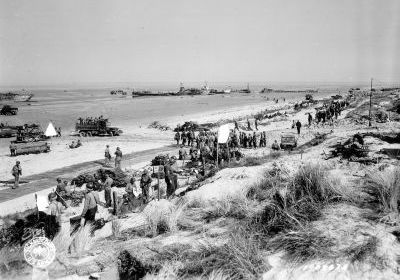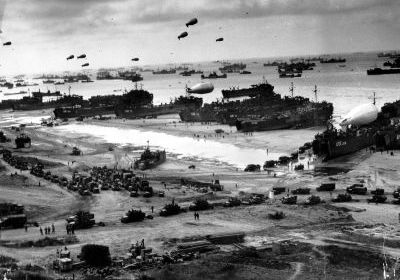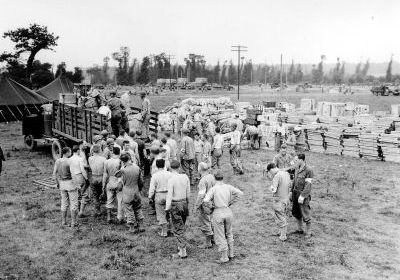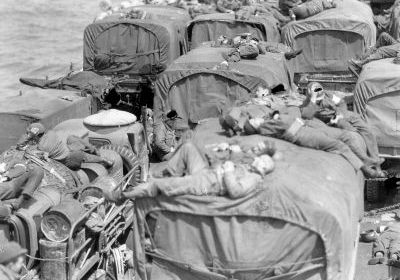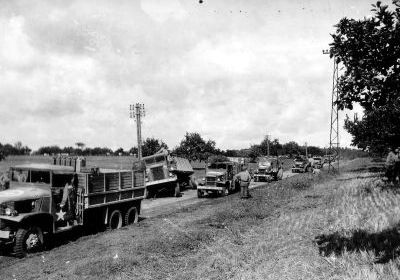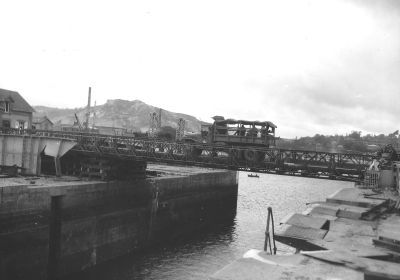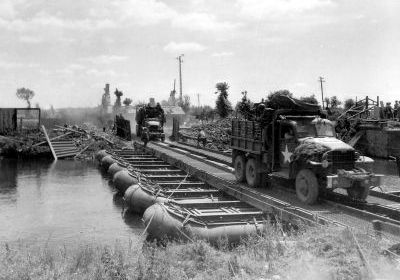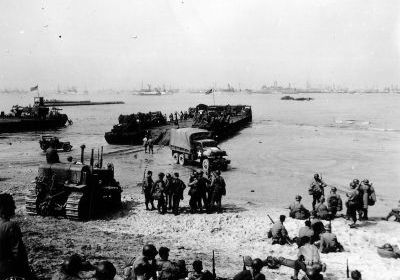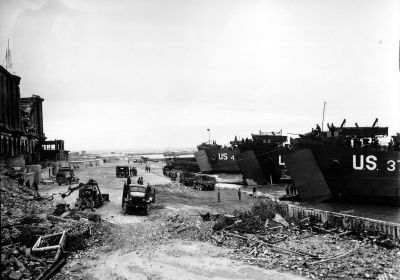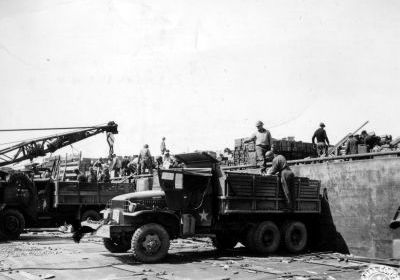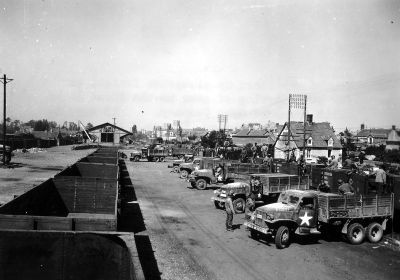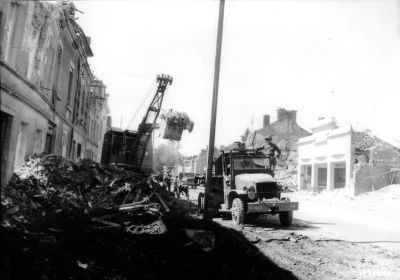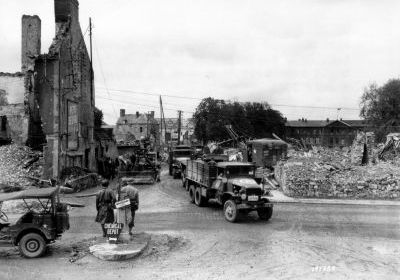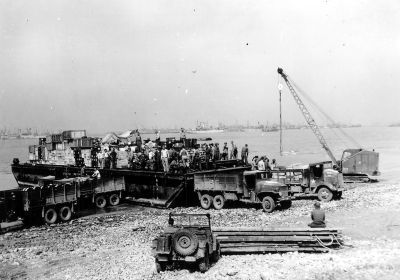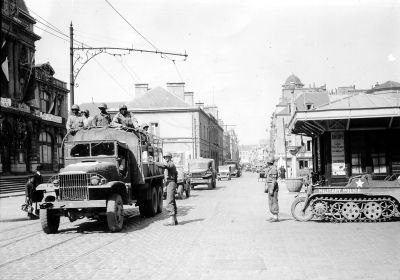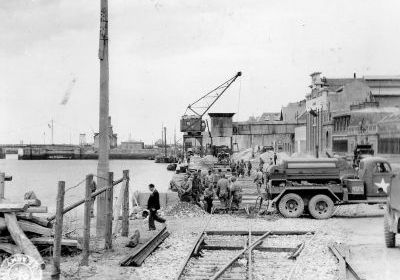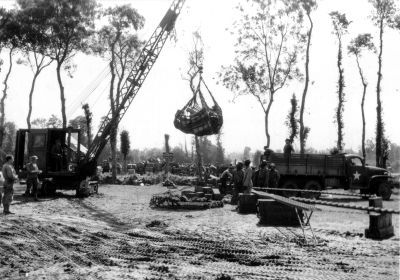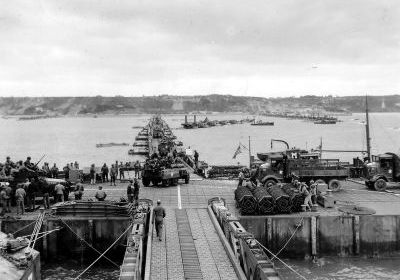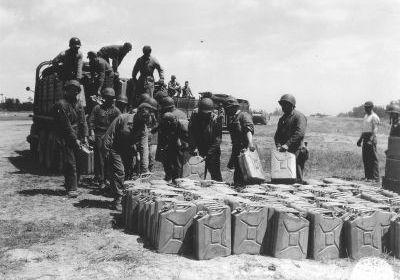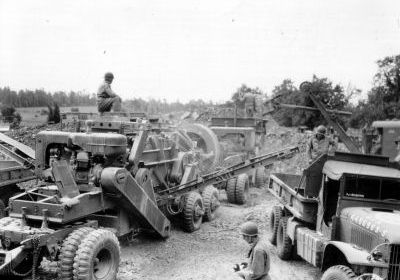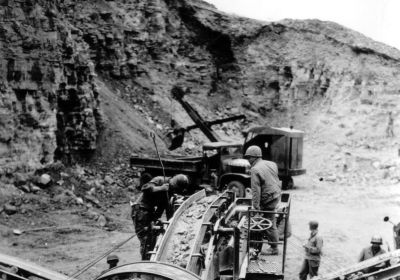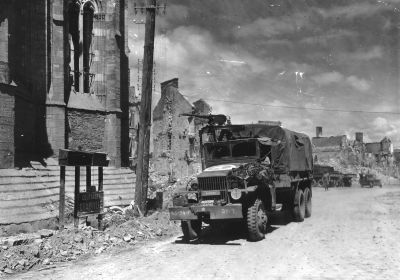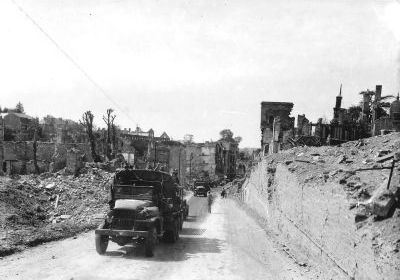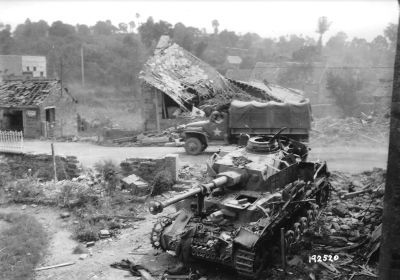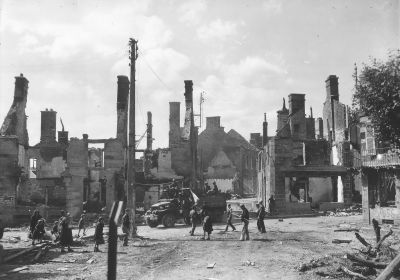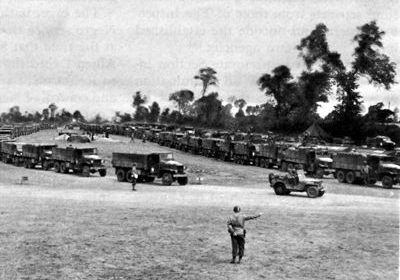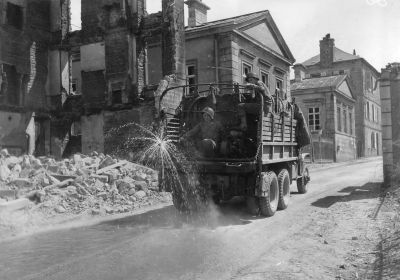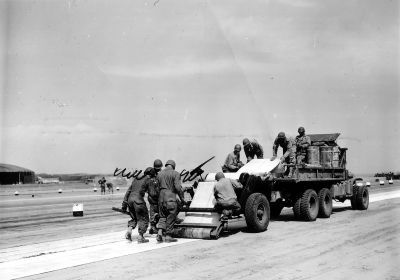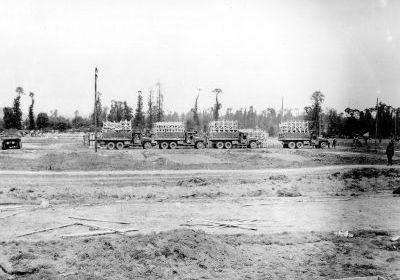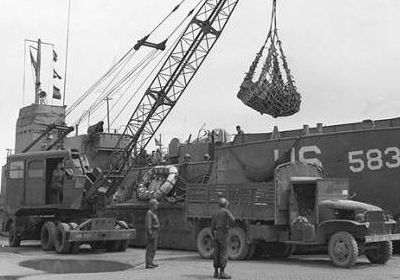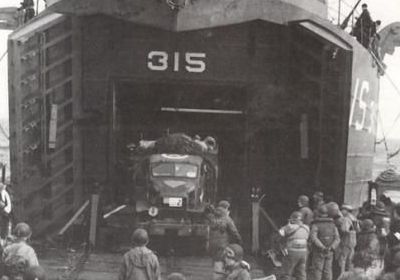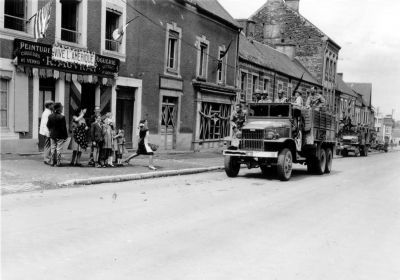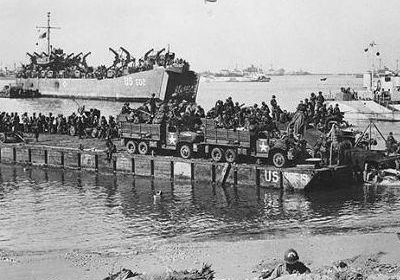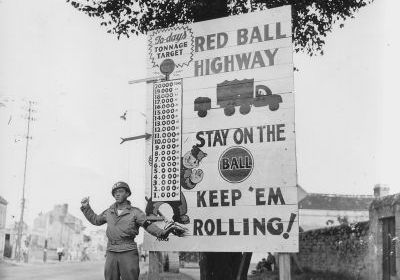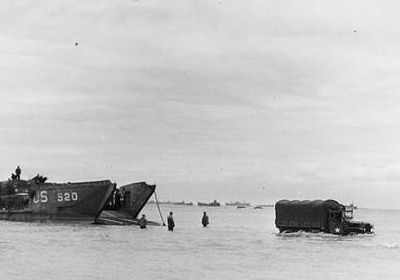The second life of GMC's
History
During the Second World War (1940-1945) almost 600,000 three-axle
2½ ton army trucks were built by the Yellow Truck and Coach Manufacturing Company (Pontiac,
Michigan, USA), a branch of the General Motors Corporation (GMC). More than 500,000 of them belonged
to the CCKW type with its typical descending hood, broad fenders, and square brush guard with
Slide show of pictures of GMC's during the
Second World War: During the Second World War CCKW's built up an outstanding reputation. They played
a legendary role in, for instance, the Red Ball Express in 1944. This was a 'conveyer belt' between French
harbours and the Allied front moving eastwards (see map (source: Colley, 2000)). To check out what it looked like, I have
included two video clips: Red Ball Express and
GMC History (the latter is selected from a Discovery
Channel documentary). A certain amount of GMC's was assembled in France in
almost open air from 1944. The process has been recorded in detail on film bij
Lt Edward J. Martin:
www.youtube.com/watch?v=hhf4ynHqVq . In 1952 the history of the Red Ball Express
also featured in romantic movie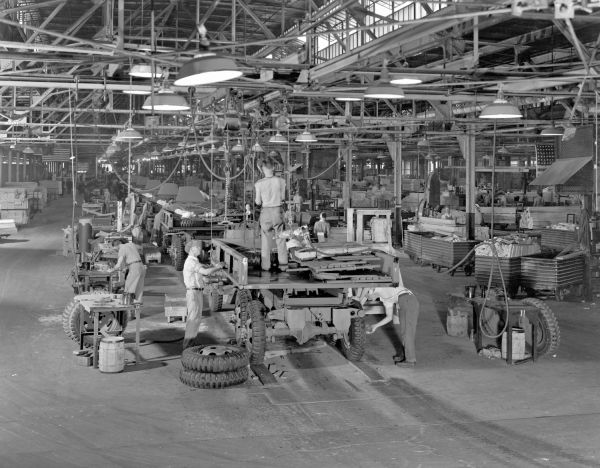 integrated rounded head lamp protectors. Imagine: more than 300 trucks per day, five
years on a row. The CCKW was inspired by the more streamlined ACKWX which in turn was based on pre-war civilian
GMC's. As for the ACKWX, the type code has the following
background: model year 1939 (A), engine in front of cab (C), optional front axle drive (K), drive of two
rear axles (W) and a wheel base other than that of civilian types (X). CCKW's (yep, model year 1941)
initially had the suffix X but in the course of 1941 this was omitted. From that time the two available
wheel bases of the CCKW, i.e. long (4.17 m) and short (3.68 m), were indicated by the respective suffixes
353 and 352.
integrated rounded head lamp protectors. Imagine: more than 300 trucks per day, five
years on a row. The CCKW was inspired by the more streamlined ACKWX which in turn was based on pre-war civilian
GMC's. As for the ACKWX, the type code has the following
background: model year 1939 (A), engine in front of cab (C), optional front axle drive (K), drive of two
rear axles (W) and a wheel base other than that of civilian types (X). CCKW's (yep, model year 1941)
initially had the suffix X but in the course of 1941 this was omitted. From that time the two available
wheel bases of the CCKW, i.e. long (4.17 m) and short (3.68 m), were indicated by the respective suffixes
353 and 352.
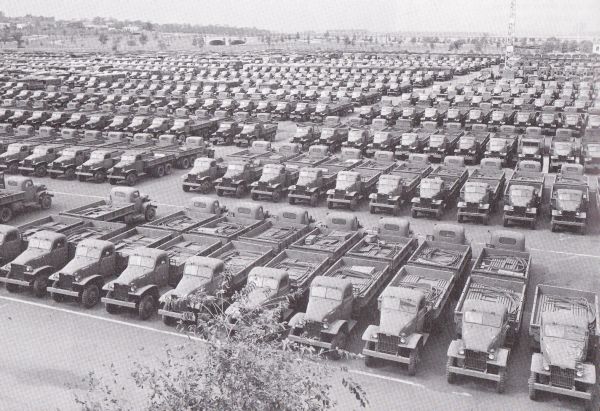 Next to the CCKW(X) several other GMC's were produced and appreciated in those days: the
'cab over engine' (COE) AFKWX, the CCW (yep ,no front axle drive) and the DUKW. The latter is a boat-shaped
amphibian version (code U) of the CCKW which was built from 1942 (code D). Its nick name was 'duck'.
Next to the CCKW(X) several other GMC's were produced and appreciated in those days: the
'cab over engine' (COE) AFKWX, the CCW (yep ,no front axle drive) and the DUKW. The latter is a boat-shaped
amphibian version (code U) of the CCKW which was built from 1942 (code D). Its nick name was 'duck'.

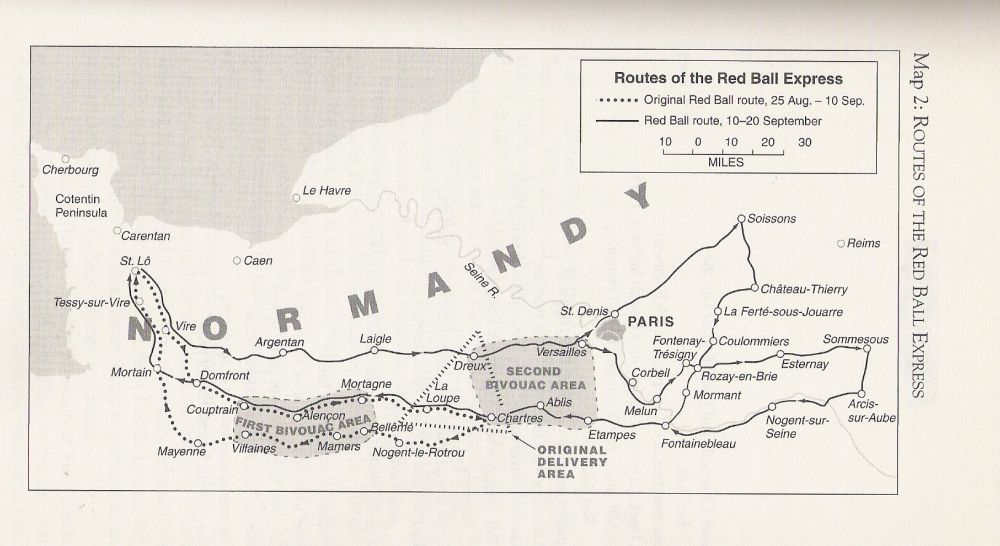
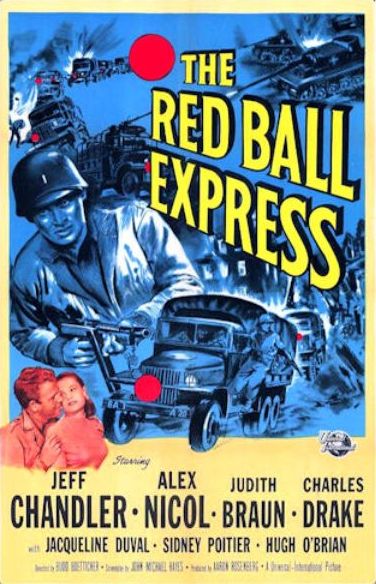
CCKW's were not only often called 'Jimmy' or 'Deuce and a half', but also 'workhorse of the army' as a tribute to their reliability and strength. After the war efforts they maintained their notorious reputation. Until the 1970's CCKW's were not only used by many armies but also cherished by construction companies, breakdown & towing services, fire brigades, showmen & fair companies, and circusses. They were bought from redundant army supplies. Consequently, GMC's became 'Classic Heroes of the Roads' and for my generation not primarily just army trucks. Let me first show you a few advertisements from that time. In these ads the manufacturer reminds us of the role of CCKW's in warfare.
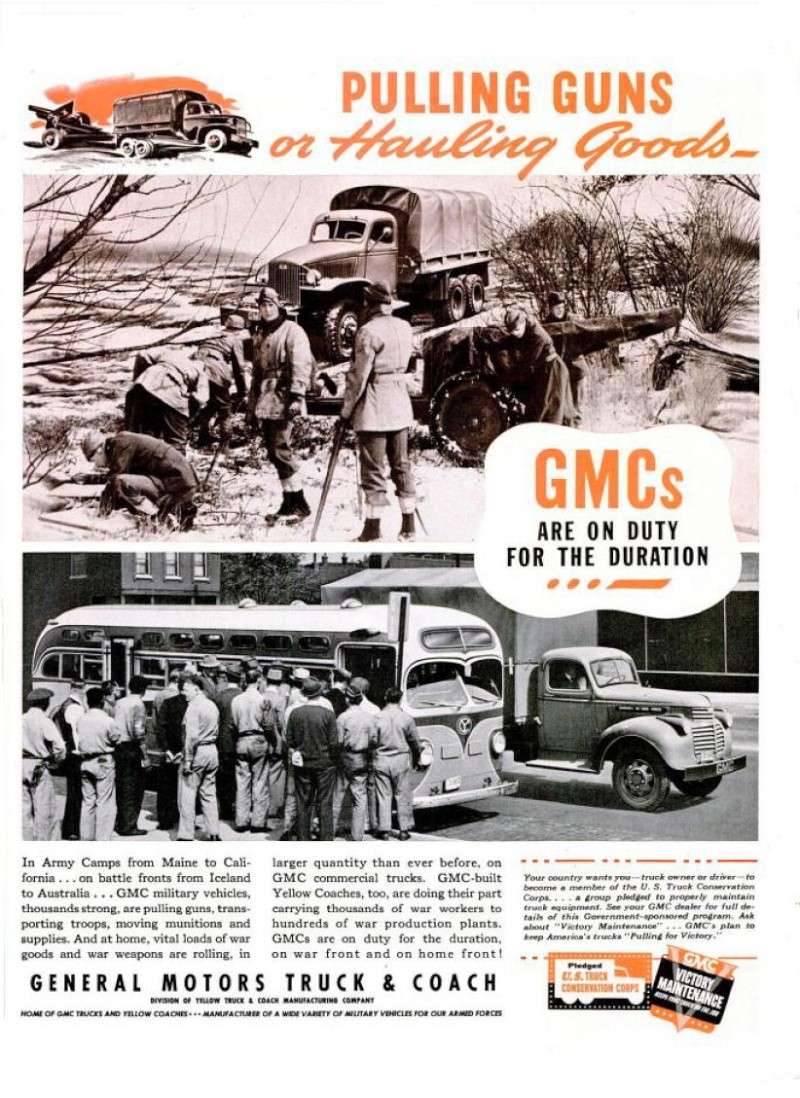
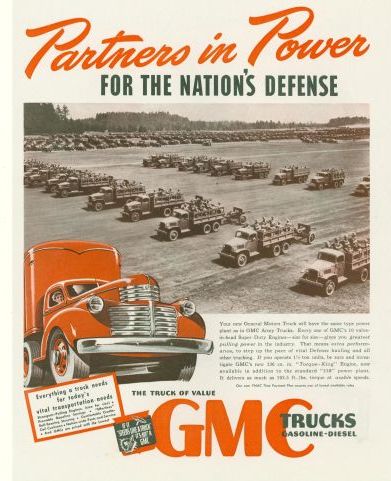
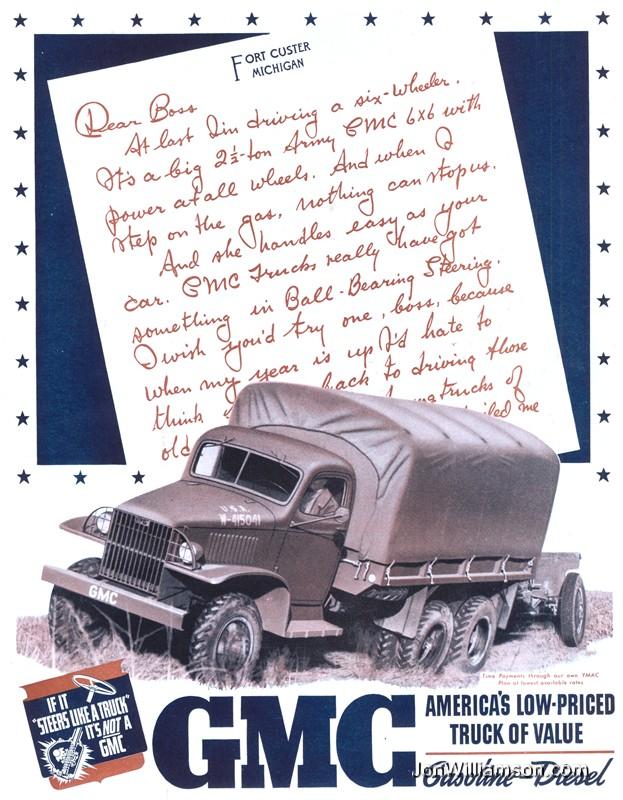

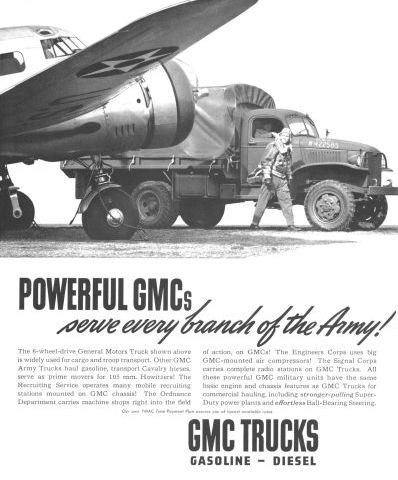

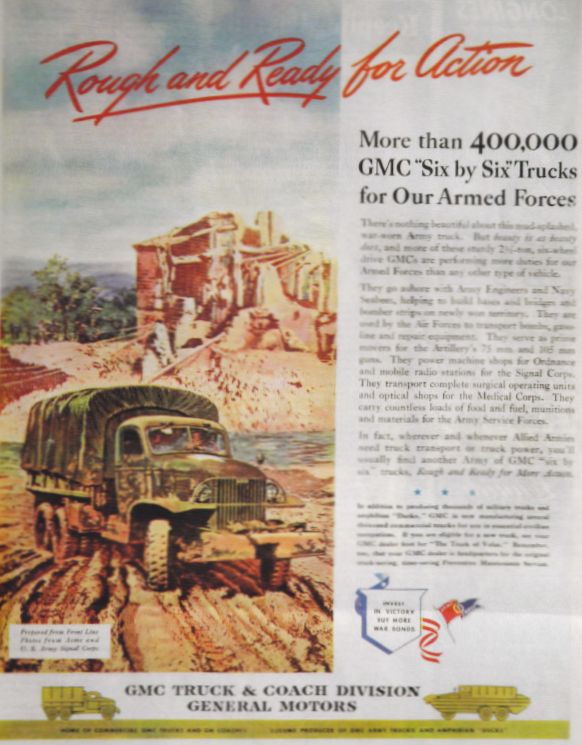
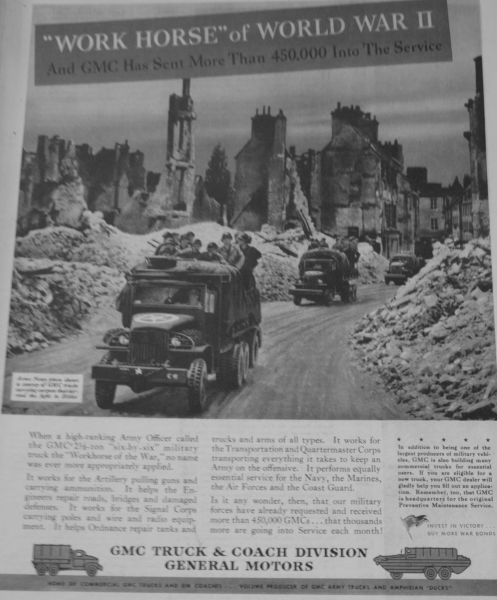
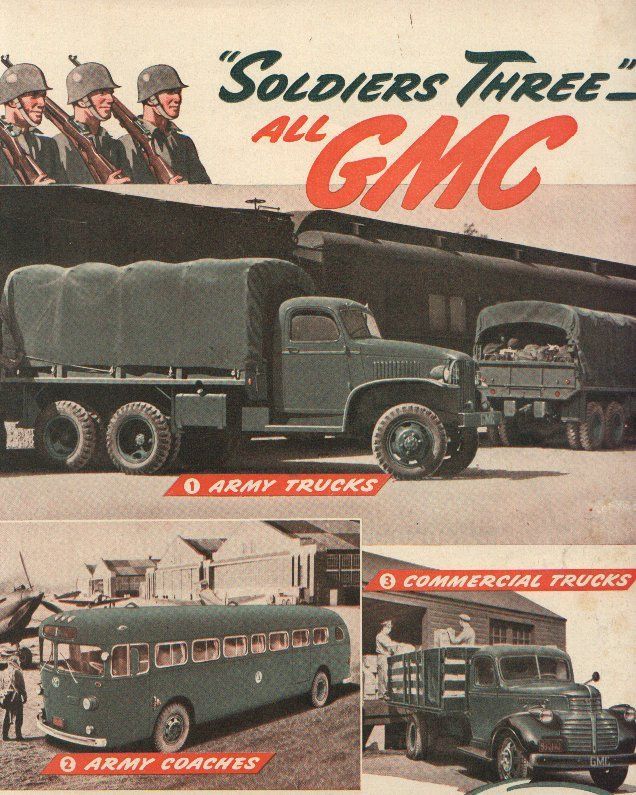
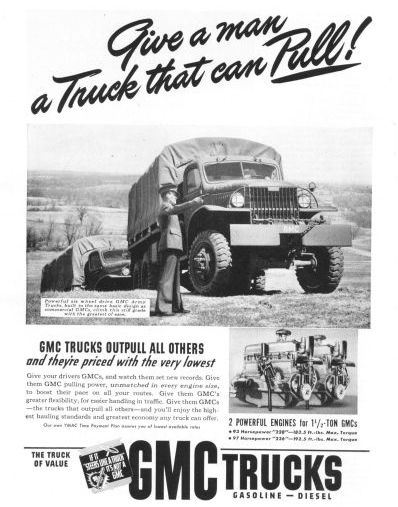

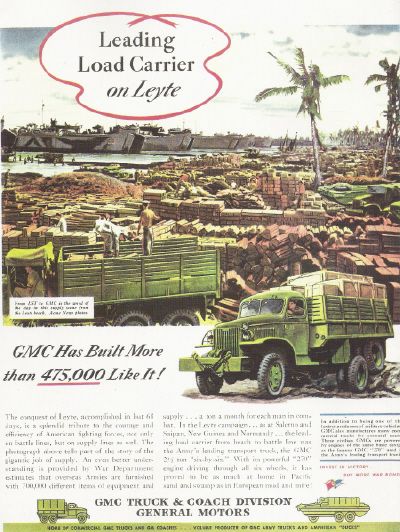
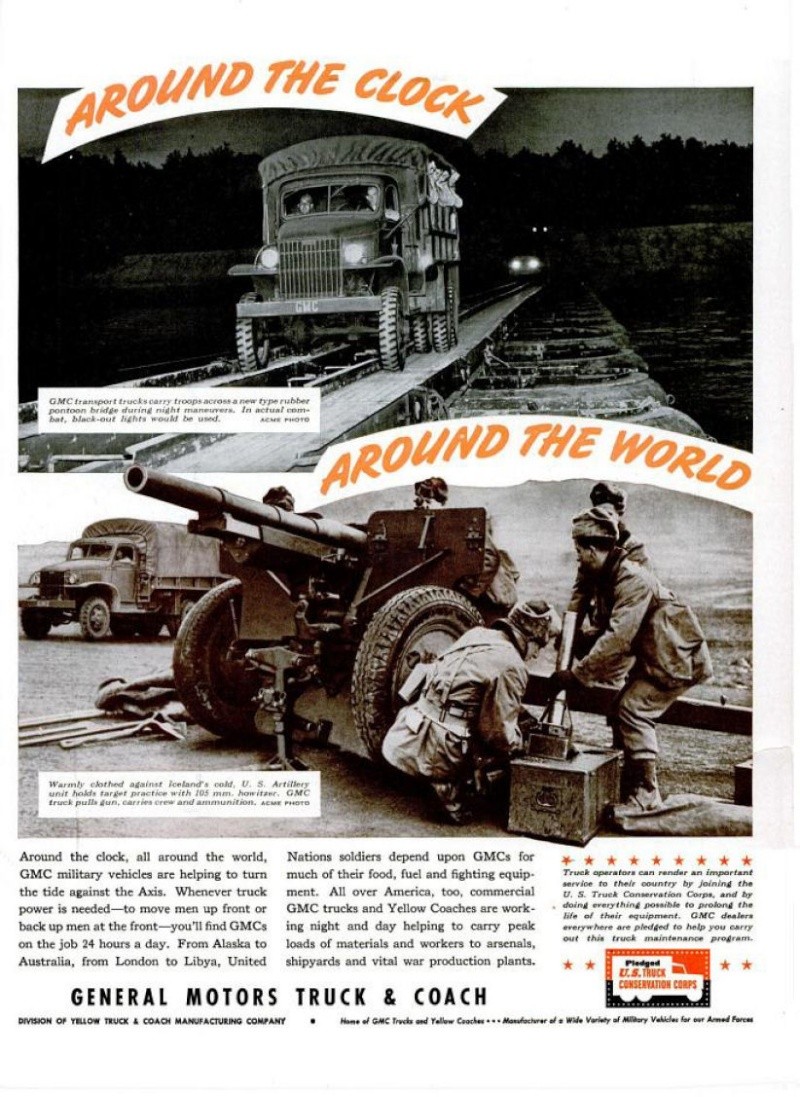

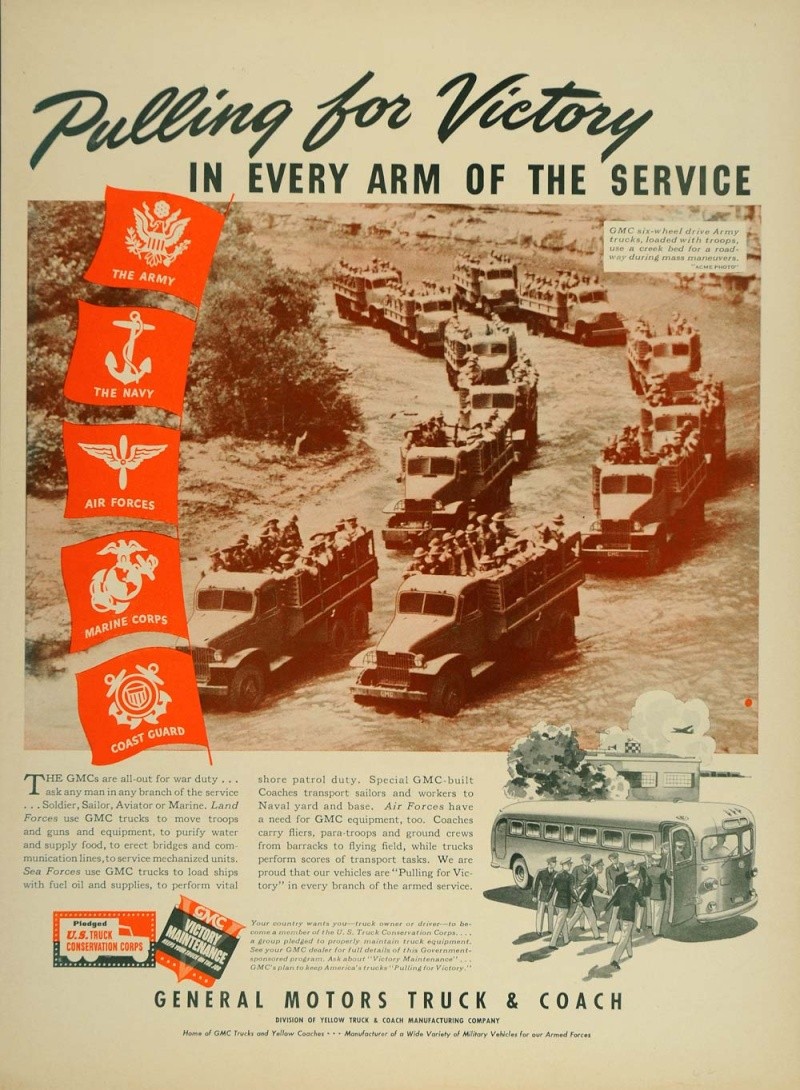
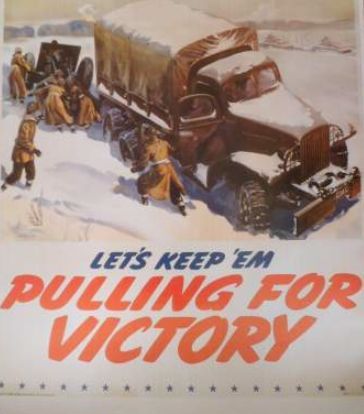
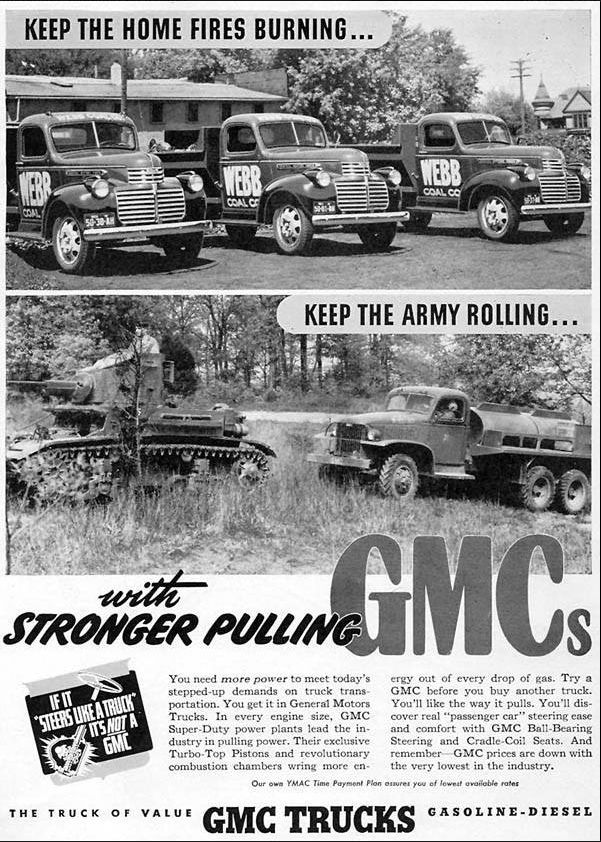
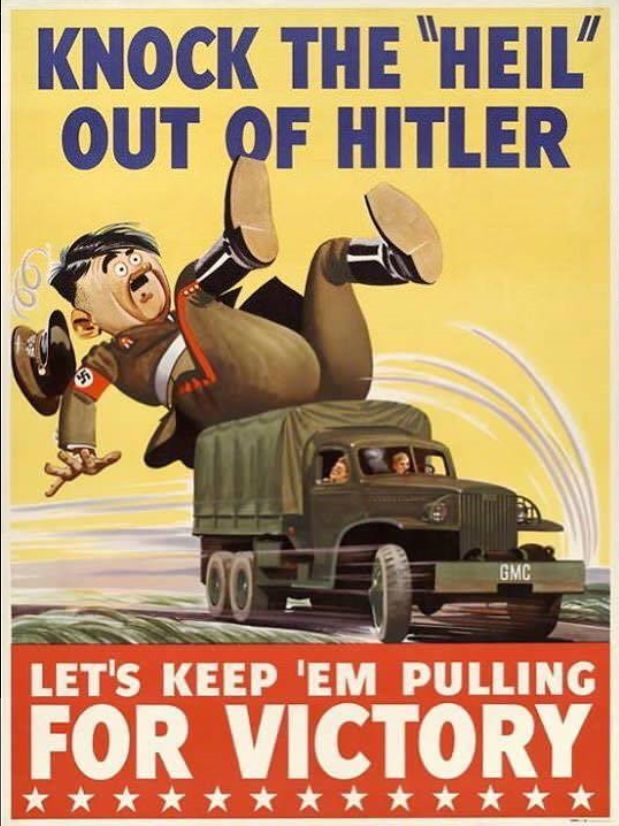
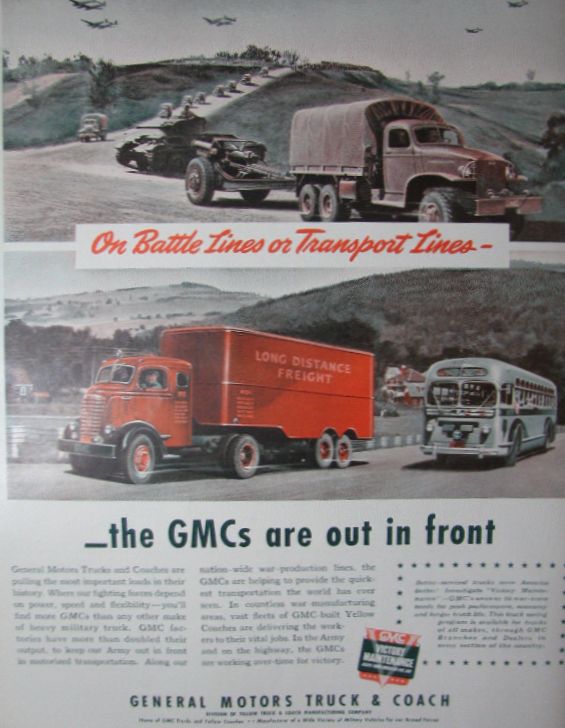
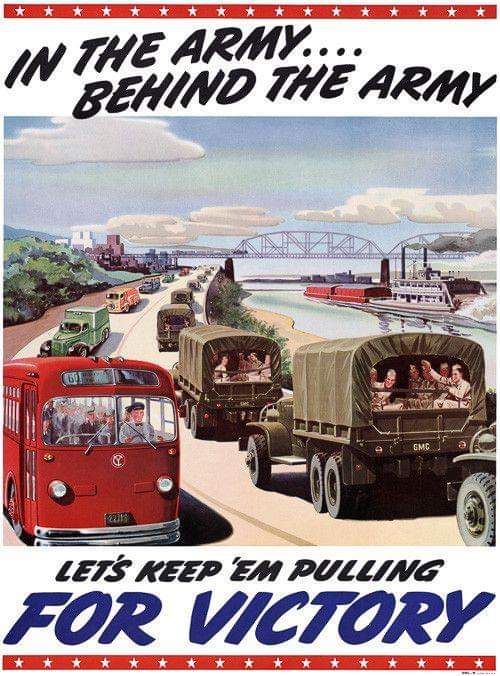
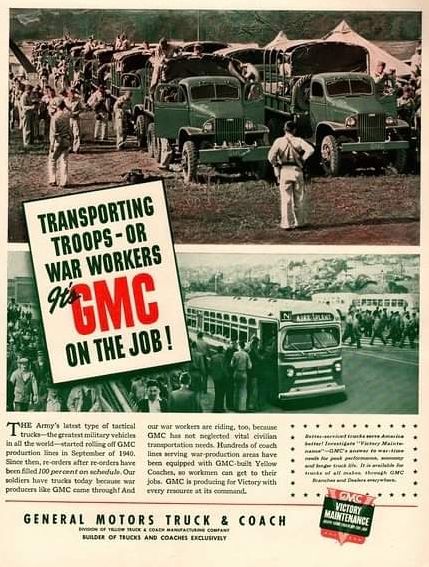

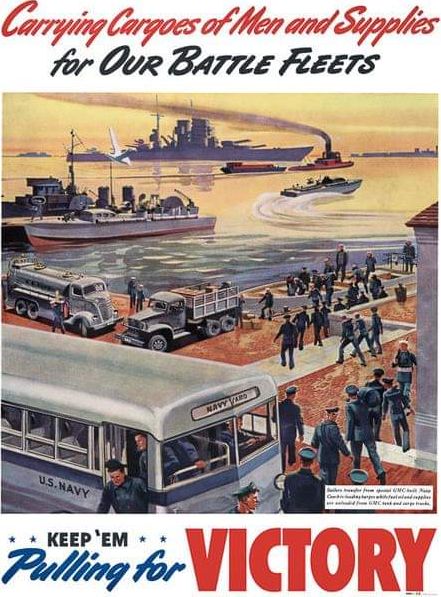
For a mix of considerations (sincere desire to rebuild European economies, transport costs of repatriation, reluctance of manufacturers fearing that the American home market would be spoiled by returning trucks.....) GMC's were left in enormous numbers in the former European Theatre of Operations, as illustrated with the following pictures (the first and the last picture is from New Zealand (courtesy of Don McLean).
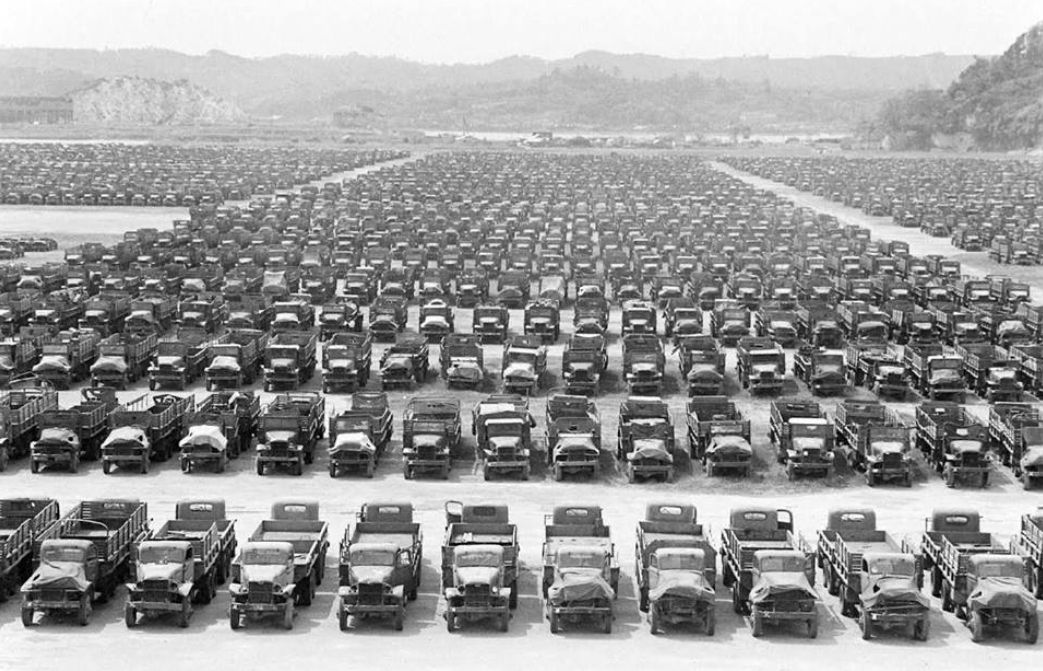
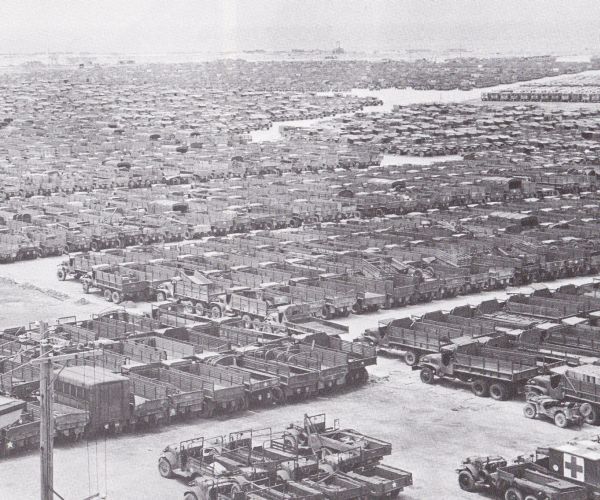
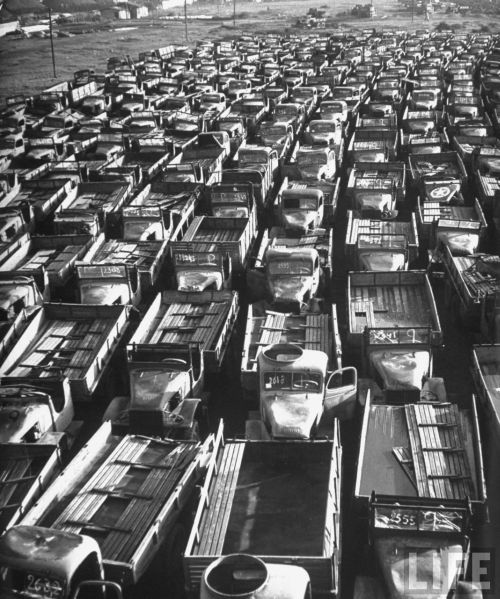
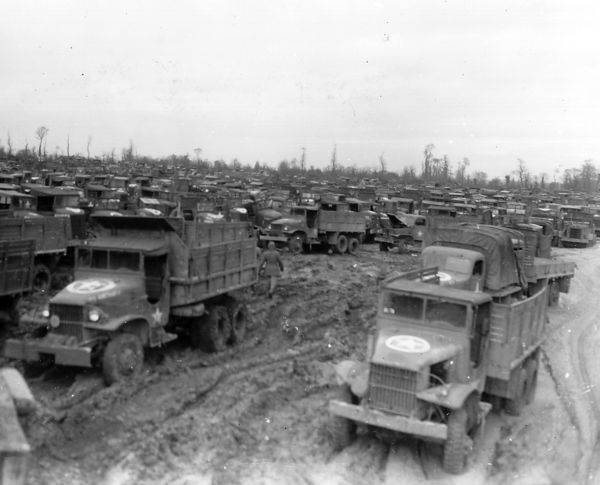
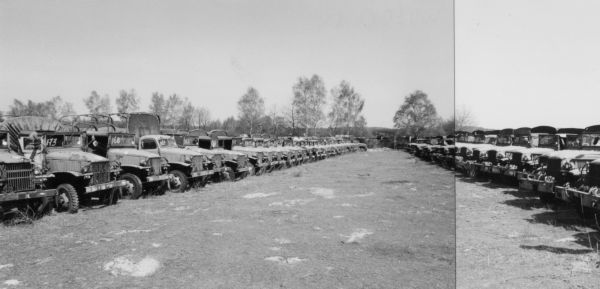
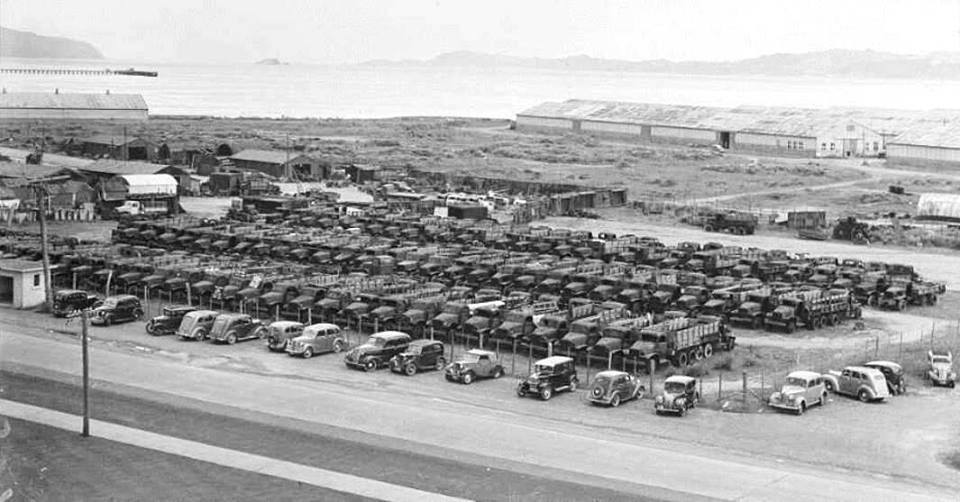
From such yards, trucks were sold to firms eager to resume business. The following advertisments (courtesy of Peter Albers, Sjaak Oosterling, Peter de Groot and Phillippe Kessels) try to convince Dutch construction companies that CCKW's deserve a second chance. The only adjustments made were the installation of a new tipper body and replacement of the original open cab by a so-called Dutch cabine. The truck frame was often reinforced to increase the pay load. Reference made to the 'Canadian Stocks' in advertisements seems incorrect as Canadian liberators will have used CMP trucks (Chevrolets and Fords) rather than GMC's. I have tried to make an estimate of the total number of CCKW's that have been active in civilian life in The Netherlands but my contacts with General Motors Nederland, RDW, BOVAG, RAI, yielded nothing. In 2024, however, Piet de Jong, former employee of General Motors Nederland, told me that 4135 CCKW's were imported from France between September 1945 and April 1946. They were stored on the former WW2 air strip in Heesch/Nistelrode and from there conveyed to GM sites in Rotterdam.
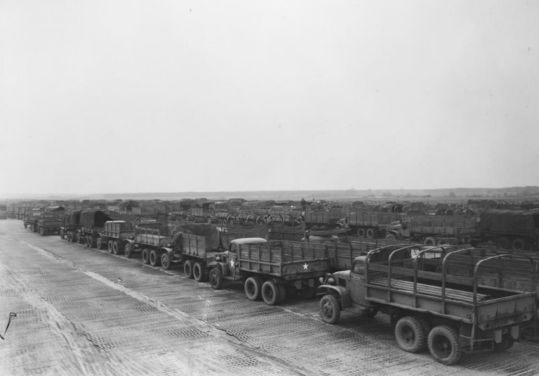
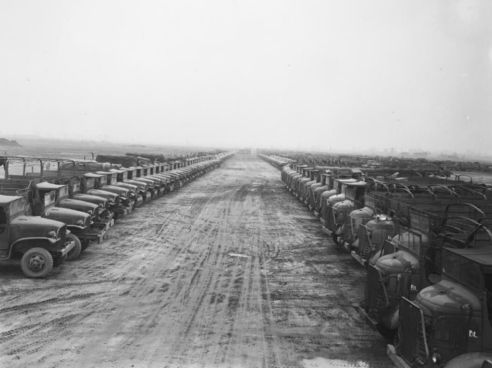
Fotobron: www.nisterle.nl
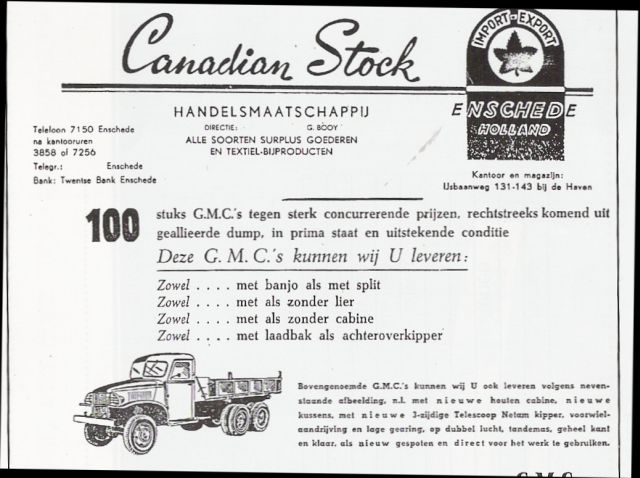

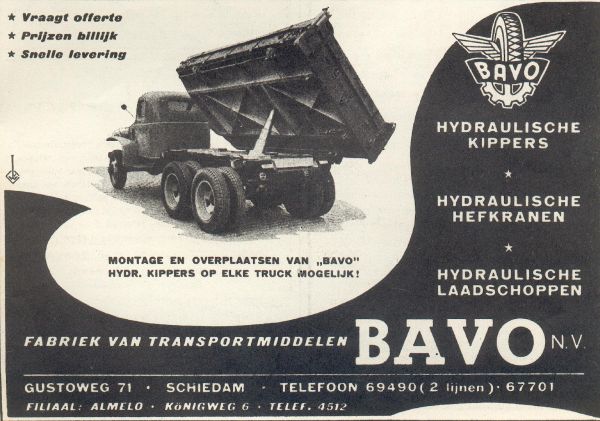
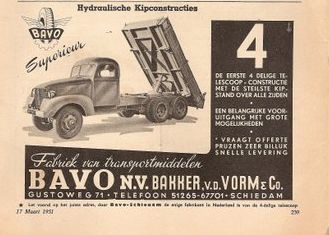

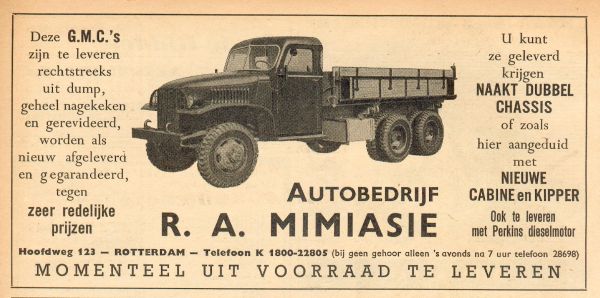
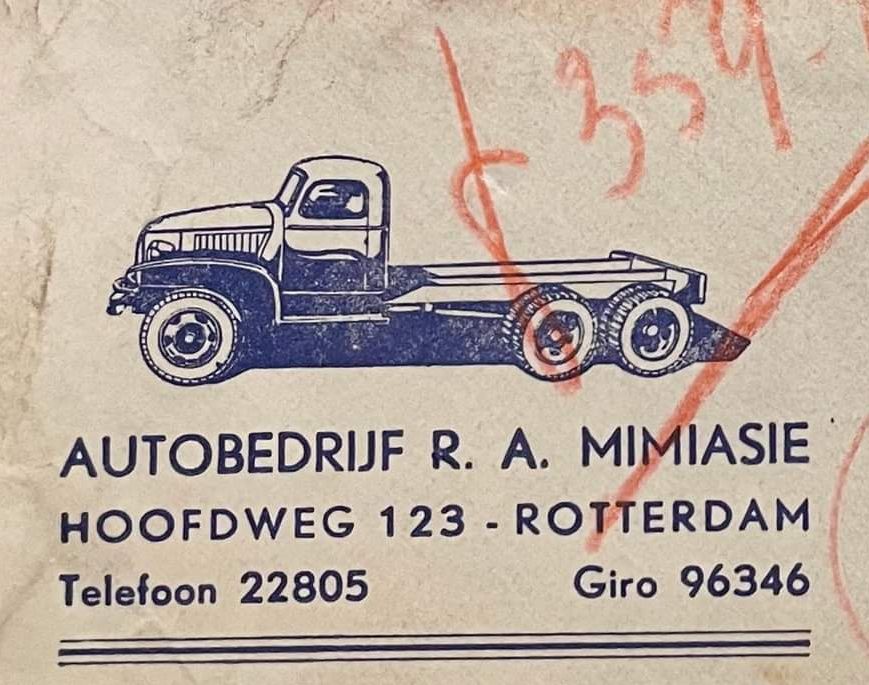
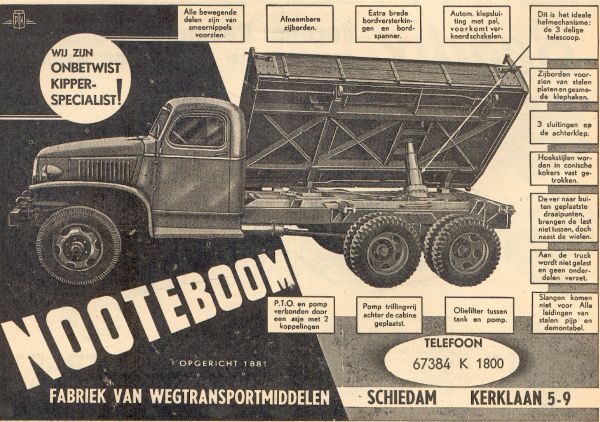
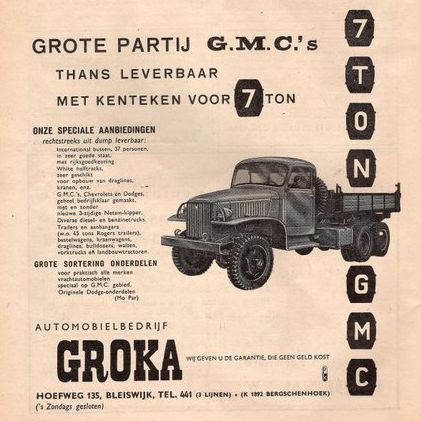
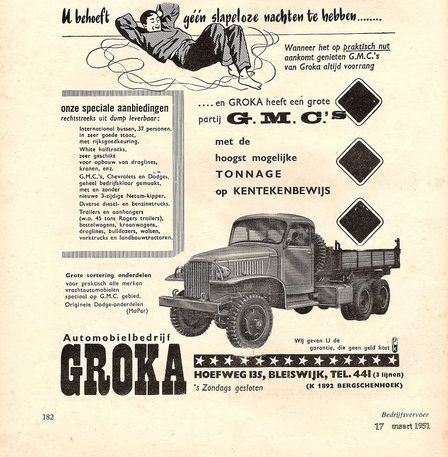
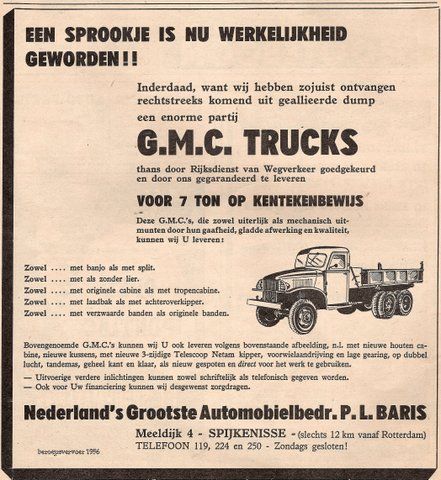
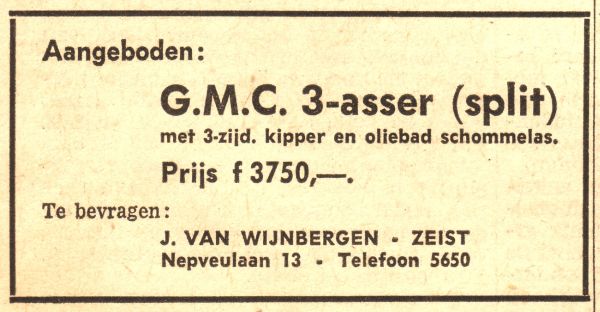
One cubic meter of moist sand weights 1500 kg. That is why the pay load of post war CCKW's was increased to 6.5 tonnes by installing an auxiliary frame and so-called Chevrolet axles (consult the ad from 1957 below). I have been told that these axles were taken from the Canadian army 6x6 Chevrolet 'CMP' ' C60X. These trucks (see picture) were left in large numbers in The Netherlands.
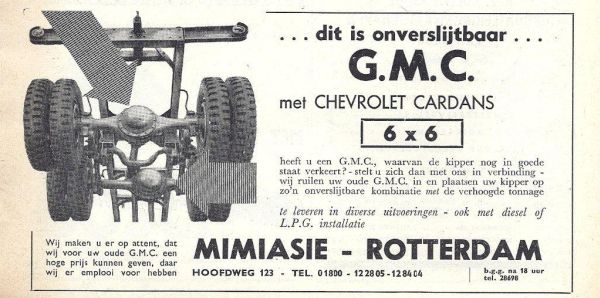

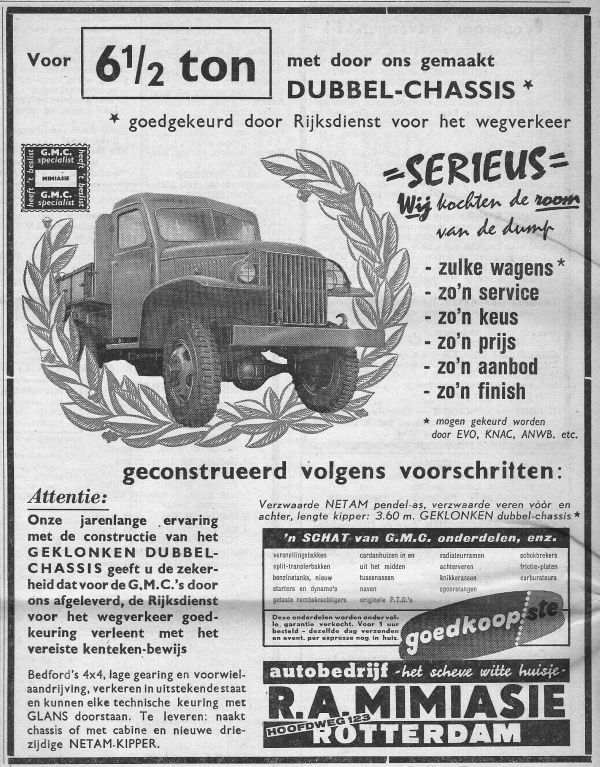
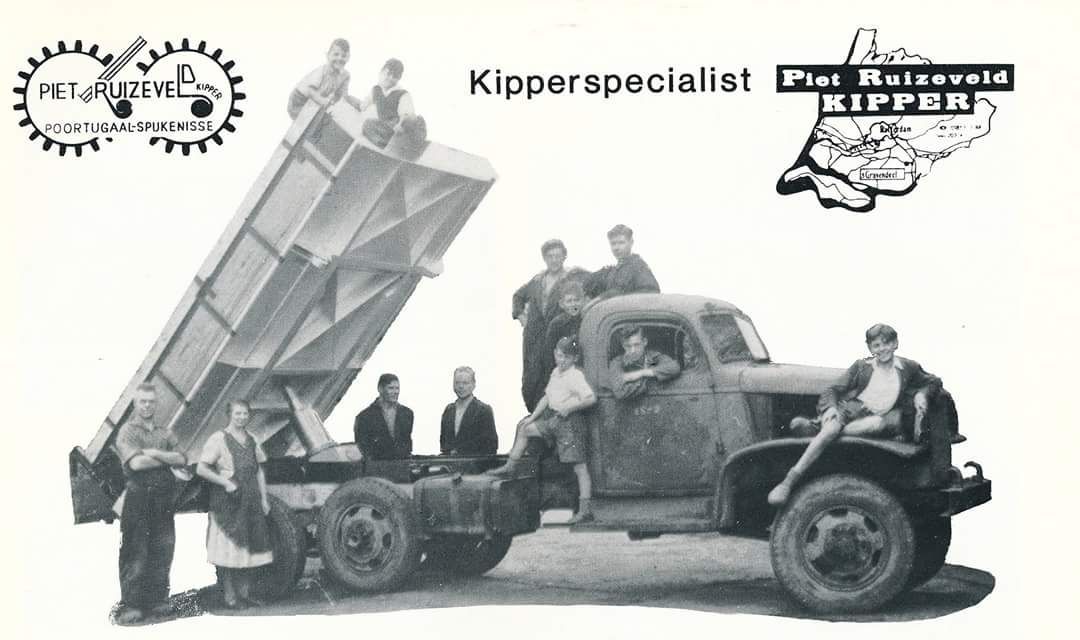
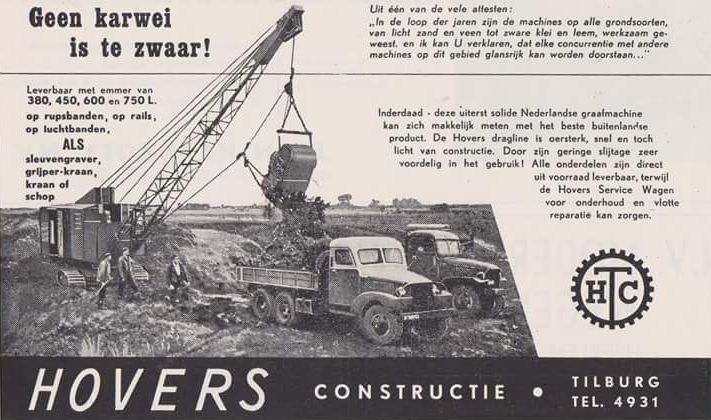
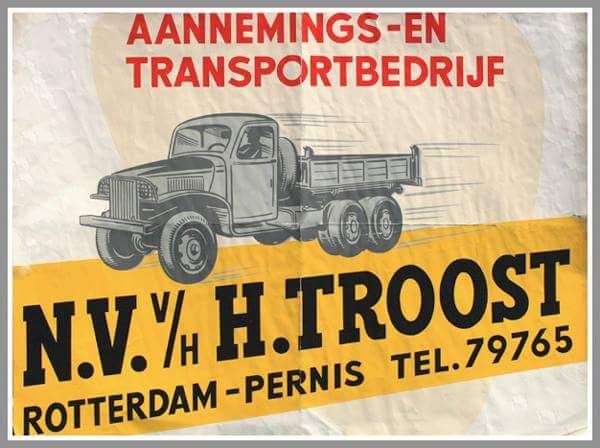
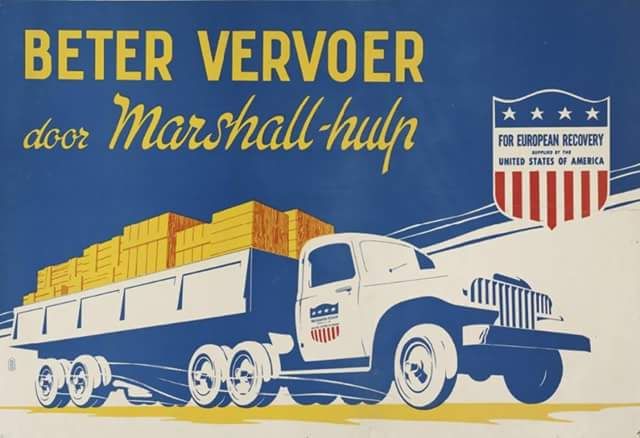
As a logical consequence of the numerous post-war truck dumps, GMC's achieved a second life in France too. Private firms took care of spara parts provision as shown by this advertisement (courtesy of Henk Jansen).
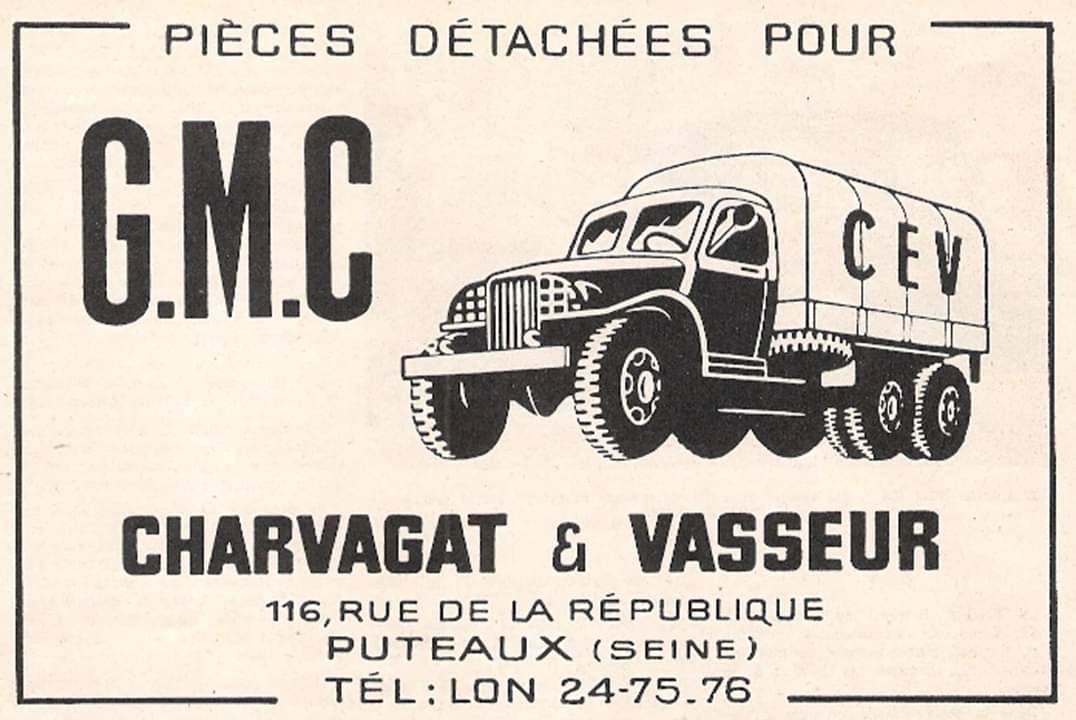
In the Netherlands GMCs with an open cab in particular, were given a closed cab made out of wood and steel. That offered drivers an inner additional space of at least 25 cm, as shown by the next picture (courtesy of Henk Jansen).

The Veldhuijzen firm from Bloemendaal delivered their skips per GMC as shown by this advertisement. The page about 'trucks' demonstrates what this looked like (courtesy of Henk Jansen).
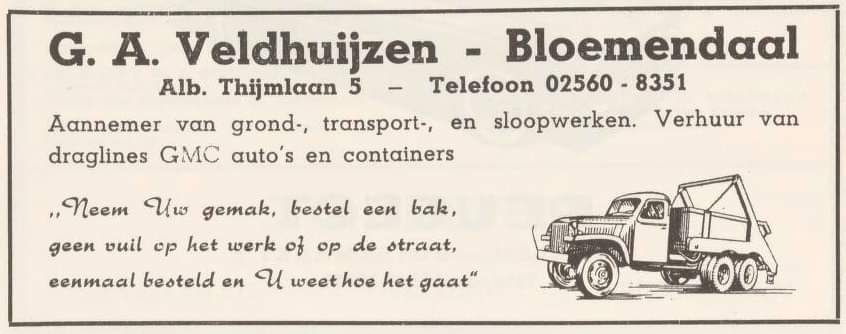
Not only in The Netherlands GMC's got a second chance, in New Zealand too they were appreciated (courtesy Henk Jansen).
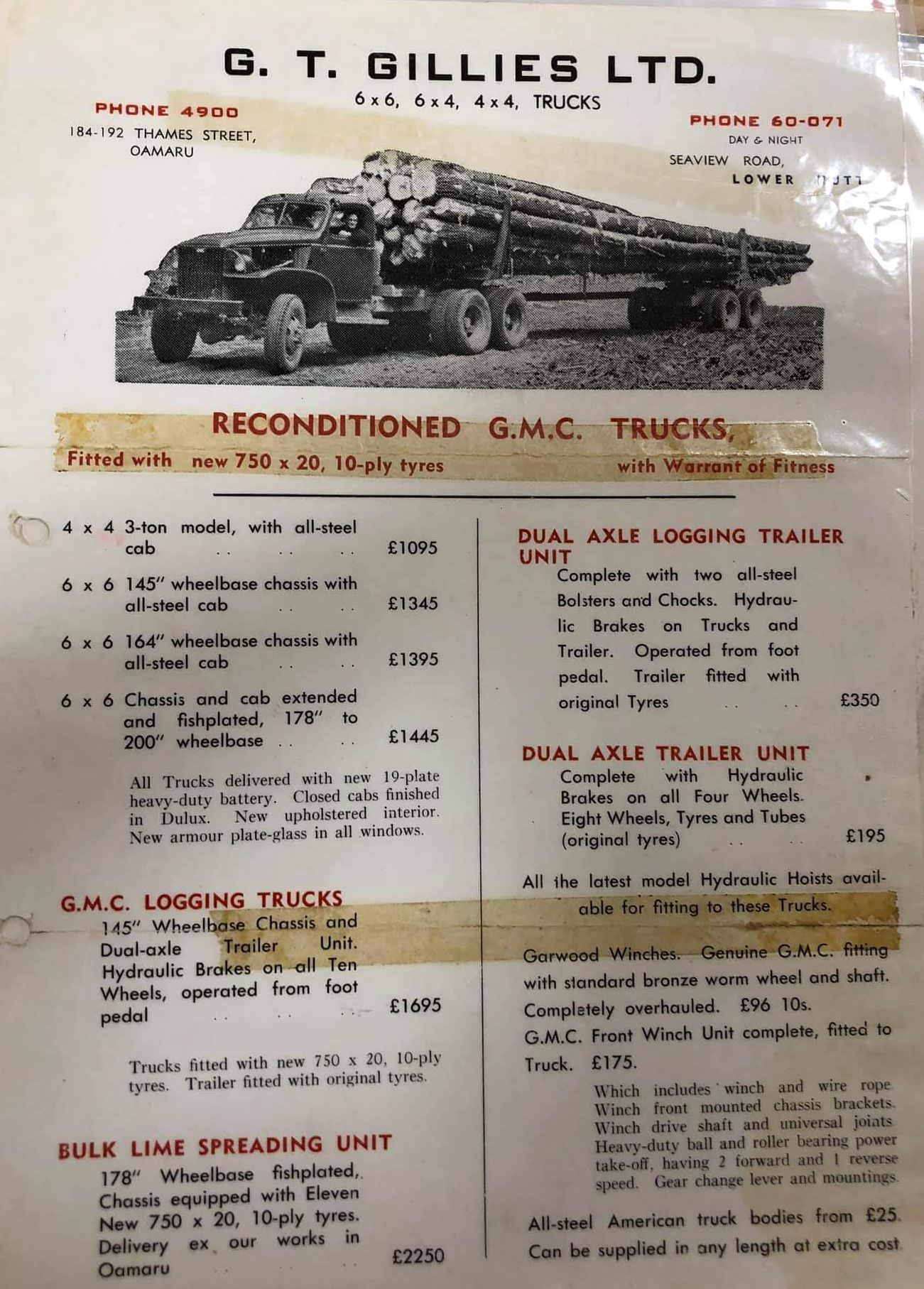
GMC: a self-evident basis for a Fuchs 300 dragline.
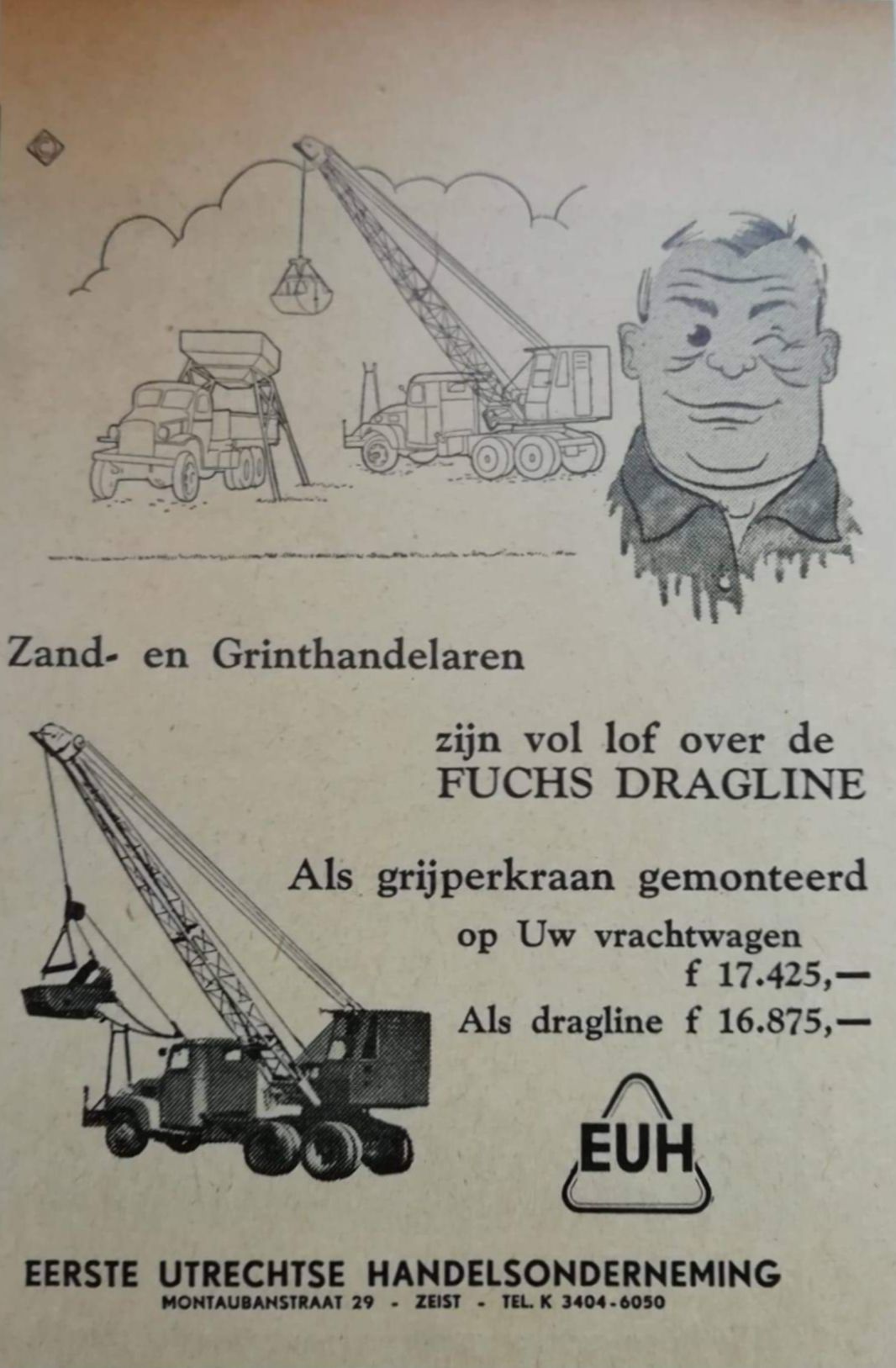
Not only in The Netherlands GMC's got a second chance, also in France.
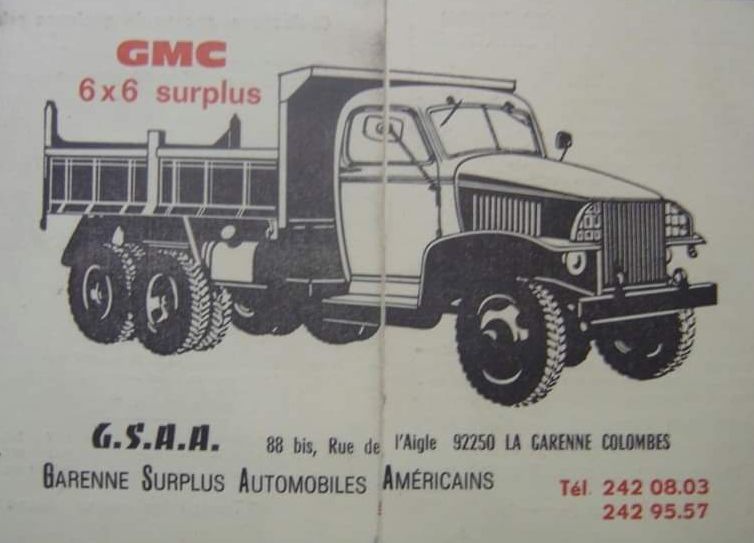
Close-up of a 'three way' tipper body bij Netam, Rotterdam.
